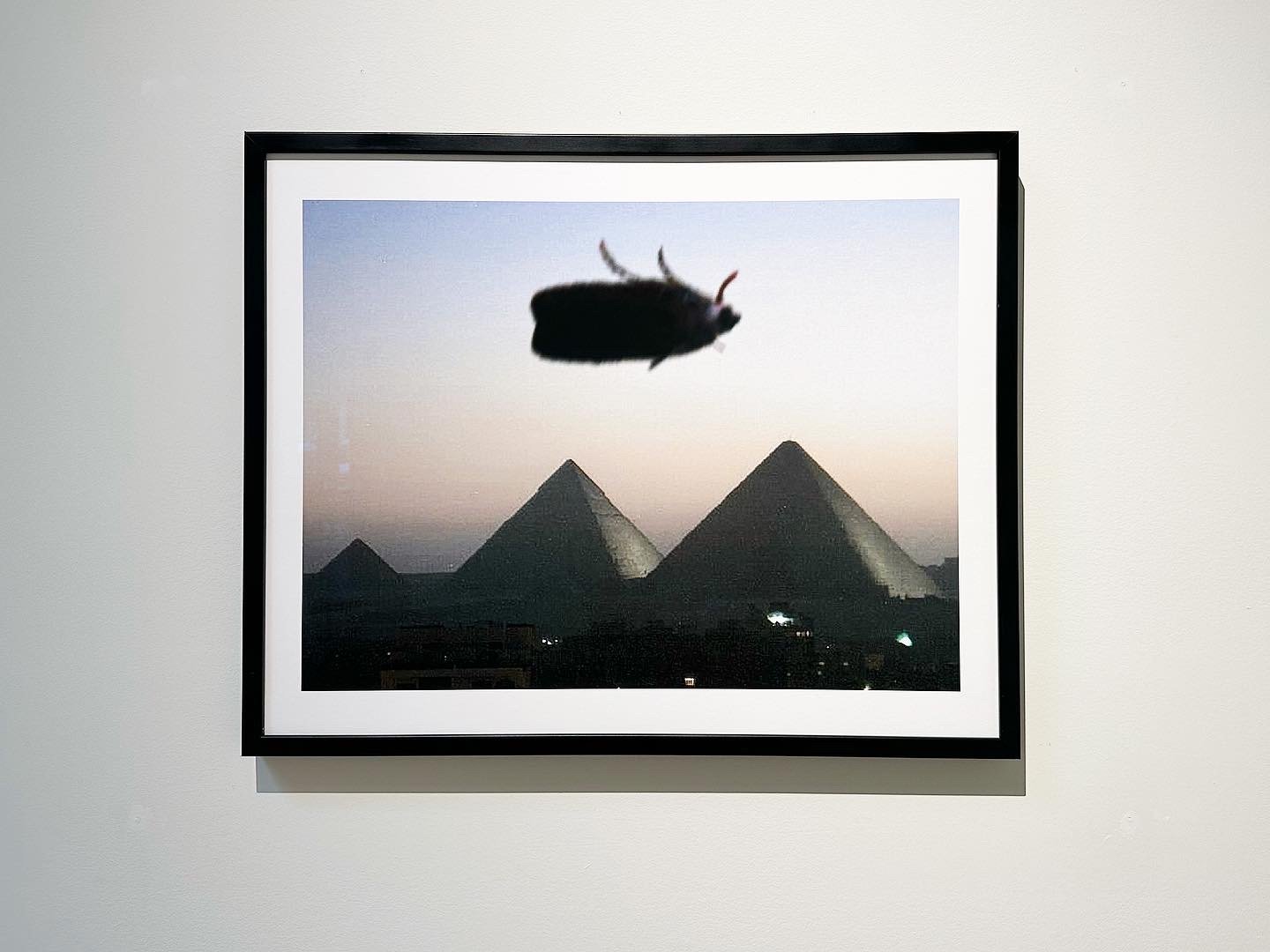Machine Vision Artist Feature: Adam Chin
MACHINE VISION
March 3 – April 29, 2023
Join Candela Gallery over the next few weeks as we feature artists from Machine Vision, a survey of tech-based photographic works: Michael Borowski, Kurt Caviezel, Adam Chin, Rashed Haq, Noelle Mason, Drew Nikonowicz, Maija Tammi, and Corinne Vionnet.
ADAM CHIN
Kiss #17, 2021. Diptych, Selenium-toned Gelatin Silver Prints,
25 x 17 inches, Framed. Edition 1 of 10. $1500, Framed INQUIRE >
Adam Chin's suite of photobooth diptychs creates a charming and puzzling first impression as gallery goers enter the space. These works, from the series Photobooth Kiss, present a duality of past and future, combining the familiarity of the nostalgic image with the uncertainty of machine learning.
Another small run of diptychs, depicting vintage mugshots, is nestled in the far back room. The three works from Chin's series, Front & Profile present limitations in machine learning by drawing attention to racial bias in the artificial creations.
Mugshot #61, 2019. Diptych, Selenium-toned Gelatin Silver Prints, 21 x 21 inches each, Framed separately.
Edition 1 of 10. $2000. INQUIRE >
PHOTOBOOTH KISS
Kiss #19, 2021. Diptych, Selenium-toned Gelatin Silver Prints, 25 x 17 inches, Framed.
Edition 1 of 10. $1500, Framed. INQUIRE >
Willie Jean and Joanne, 2021. Diptych, Selenium-toned Gelatin Silver Prints,
25 x 17 inches, Framed. Edition 1 of 10. $1500, Framed. INQUIRE >
To create the diptychs in Photobooth Kiss, Chin utilized a Machine Learning network, training it on a database of vintage photobooth strips. From a sample of 200 images, Chin “taught” the network what a non-kissing and kissing image could look like. He then fed the network photos which didn’t have a kissing counterpart, allowing the machine to use its new knowledge to fill in the blanks. The resulting images are a disorienting blur of pixelated profiles, some more distinctly human than others. By pairing the original photograph with the new image, Chin has elevated the machine’s failure at human intimacy to visual poetry, while giving possibility and motion to the previously stagnant couple
Eric and Djola, 2021. Diptych, Selenium-toned Gelatin Silver Prints,
25 x 17 inches, Framed. Edition 1 of 10. $1500, Framed. INQUIRE >
"Who are these couples in the photobooths? Some are friends, some are friends who are no longer with us, others are strangers. The subjects were chosen for their diversity in sexuality, ethnicity, and time period — to challenge our assumptions of who may or may not be kissing. We may never know if these couples actually kissed in the photobooth that day. Photobooth Kiss constructs an alternative photographic reality where, indeed, the two did kiss."
FRONT & PROFILE
Mugshot #3, 2019. Diptych, Selenium-toned Gelatin Silver Prints, 21 x 21 inches each, Framed separately. Edition 1 of 10. $2000. INQUIRE >
Mugshot #67, 2019. Diptych, Selenium-toned Gelatin Silver Prints, 21 x 21 inches each, Framed separately. Edition 1 of 10. $2000. INQUIRE >
Though the process for Chin’s Front & Profile is similar to that of Photobooth Kiss, the visual data presents a question: Can machine learning technology be unbiased?
In this earlier body of work, the artist pulled from a database of mugshots from the National Institute of Standards and Technology, NIST. The images, made of unidentified men from the 1930’s-1970’s, showed a percentage of African American men that was much higher than the actual average of African Americans in the population of the United States. This discrepancy is consistent with knowledge that minority populations, especially African-American men, are incarcerated much more frequently than Caucasian men. If artificial intelligence is trained on dramatically skewed data sets, will it cause bias in their performance?
Chin poses, “What can stop a government from generating multiple pictures of a person from just their driver’s license or passport photo? What rights to privacy does a person have? Finally, how accurate are these Machine Learning generated images? For now the results are fairly crude, but as the technology advances they will become more photoreal. Will these future images be any more accurate than they are now, or will they simply be clearer images of the wrong person?"
Kiss #25, 2021. Diptych, Selenium-toned Gelatin Silver Prints,
25 x 17 inches, Framed. Edition 1 of 10. $1500, Framed INQUIRE >
ABOUT ADAM
Adam Chin is a fine art photographer who spent a career as a computer graphics artist for TV and film. He practices using Machine Learning neural networks trained on databases of real photography to render images. By augmenting traditional photography with neural networks, he is exploring the concept of how much information is contained in a given photograph.
Adam studied darkroom photography under Barry Umstead at Rayko Photography in San Francisco. From 1995-2000, he was a board member and chairperson of Intersection for the Arts, a multi-disciplinary arts organization in San Francisco. In 2020, he was named one of the Photolucida Critical Mass Top 50 photo portfolio award winners, and in 2022 he won the 30 Over 50: In Context award from the Center for Fine Art Photography. Adam has a MS in Computer Science from Stanford and a BS in Computer Science from Yale. He lives in San Francisco.
MACHINE VISION
APRIL 6, 2023 | ARTIST PANEL
Join Candela Gallery on the evening of Thursday, April 6th as we welcome featured Machine Vision artists into the space for a panel covering topics regarding the overlaps in technology and photography: surveillance, artificial intelligence, NFTs, and more. Doors open at 6:00pm. Panel discussions and live broadcast begin at 6:30pm.









